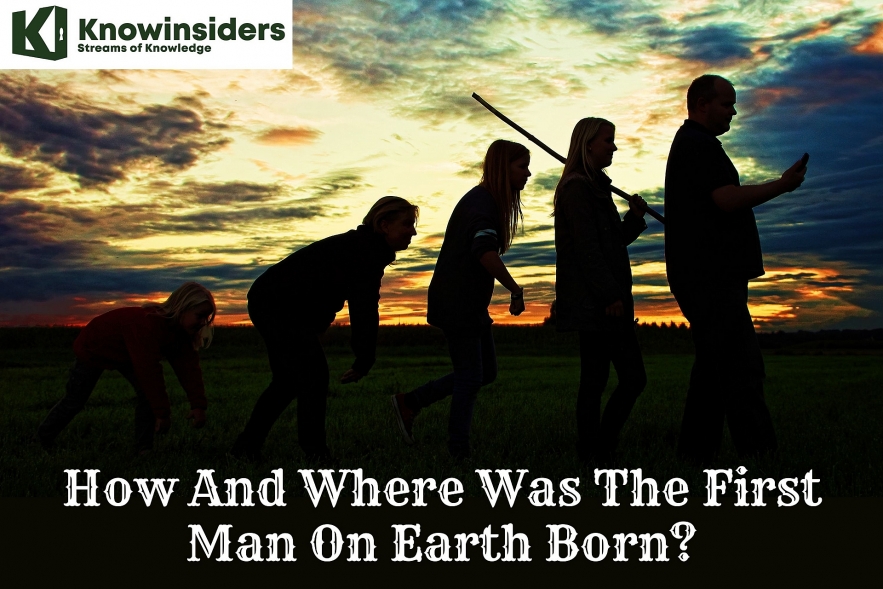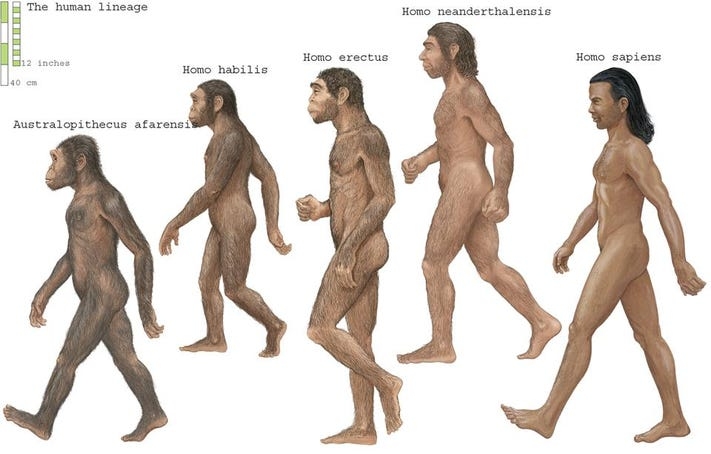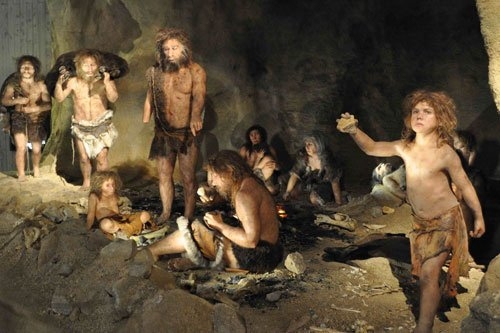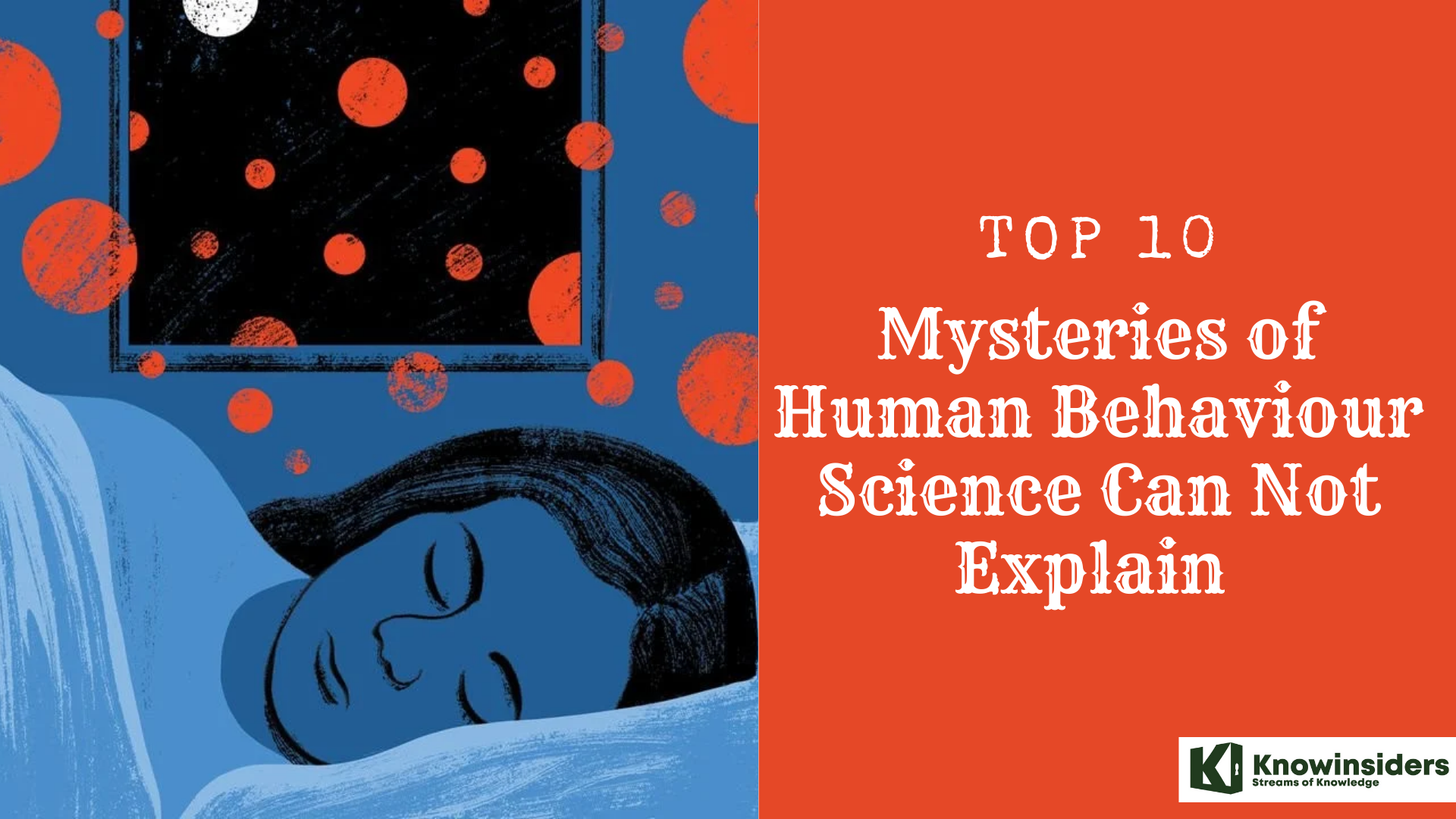Where And How Did The First Humans Born On Earth?
 |
| How And Where Was The First Man On Earth Born - Knowinsiders.com |
| Table off Content |
There has long been disagreement over the precise ancestry of modern humans. Long before the contemporary humans known as Homo sapiens made their appearance on the same continent, the first humans appeared in Africa some two million years ago.
Many anthropologists are still ignorant of the ways in which various human groups interacted and interbred during this extensive period of prehistory. They are beginning to fill in some of the gaps now that new archeological and genealogical research has been conducted.
Learn more: What is the Hayflick Limit and Why Humans Never Live Beyond the Age of 125
Where did we come from?
In Latin, the species that we are, modern humans (Homo sapiens), means "wise man." Although our species is the only one of the genus Homo still living, there is considerable disagreement about our origins. Homo erectus, or "upright man" in Latin, is the most likely recent common ancestor of modern humans, who descended from them in Africa some 200,000 years ago. The extinct human species Homo erectus existed between 1.9 million and 135,000 years ago.
In the past, two major theories have been proposed to explain how Homo sapiens evolved. These are the "multi-regional" and "out of Africa" models. Right now, the most widely recognized model is the "out of Africa" model. It suggests that before Homo sapiens migrated throughout the world, they evolved in Africa.
Conversely, the "multi-regional" model suggests that Homo sapiens' evolution occurred over a considerable amount of time and in a variety of locations. The different populations eventually mixed to form the single Homo sapiens species that exists today.
Though there is still much to learn in this field, the most recent genetic data points to a single "out-of-Africa" migration of modern humans as opposed to the "multi-regional" theory. Nonetheless, research on the genomes of the extinct hominids Neanderthals and Denisovans indicates that there may have been some genetic mixing (1-3%) with modern humans in Asia and Europe. Genes from the two previously isolated populations mix as a result of this interbreeding, which is known as "admixture."
The First Humans
First things first: A “human” is anyone who belongs to the genus Homo (Latin for “man”). Scientists still don’t know exactly when or how the first humans evolved, but they’ve identified a few of the oldest ones.
One of the earliest known humans is Homo habilis, or “handy man,” who lived about 2.4 million to 1.4 million years ago in Eastern and Southern Africa. Others include Homo rudolfensis, who lived in Eastern Africa about 1.9 million to 1.8 million years ago (its name comes from its discovery in East Rudolph, Kenya); and Homo erectus, the “upright man” who ranged from Southern Africa all the way to modern-day China and Indonesia from about 1.89 million to 110,000 years ago.
In addition to these early humans, researchers have found evidence of an unknown “superarchaic” group that separated from other humans in Africa around two million years ago. These superarchaic humans mated with the ancestors of Neanderthals and Denisovans, according to a paper published in Science Advances in February 2020. This marks the earliest known instance of human groups mating with each other—something we know happened a lot more later on.
Controversy over the birthplace of the first man on Earth
 |
| Photo: forbes |
The earliest known man originated from apes and underwent evolutionary processes, although the exact origins of the first man are still up for debate. In contrast to the statement that modern science cannot pinpoint the exact location of man's birth, it was previously thought that the human race originated in Europe, particularly in Western Europe. However, scientists subsequently issued a warning, noting that when the human trunk split, it was not in Europe but rather in Africa, though some claim it was in Europe, Asia.
Unexpected Finding
A 2017 discovery by paleontologist Jean-Jacques Hublin changed the narrative of humankind.
Hublin has been researching unusual fossils discovered in a cave in a remote, mountainous area of far-north Africa, Morocco, since the 1980s. More so than our Neanderthal cousins, the remains revealed flat faces that resembled us. Their elongated braincases and enlarged lower jaws and teeth indicated that they belonged to a primitive species that vanished between 150,000 and 200,000 years ago. This age did not match the trend of earlier discoveries or the widely held theories about the origins of our story.
It did not make sense for another human from the same time period to be unearthed on the opposite side of the continent, since the oldest find at Omo-Kibosh was located in Eastern Africa, the region thought to be the cradle of modern humans.
The paleontologist was therefore taken aback when tests in 2017 revealed that Hublin's discoveries in Morocco were made 300,000 years ago. He remarks, "It was a huge wow." "I had hoped for something older, but not that old, so I expected something older than 200,000. It caused us to reevaluate our understanding of the evolution of our species in its entirety.
Disputed Origin Story
It is thought that approximately 6 million years ago, the human species diverged from their earliest extant progenitors, the apes, to become Homo sapiens. This is when modern humans diverged from Neanderthals between 300,000 and 600,000 years ago. And we started to spread out from Africa to the rest of the world about 40,000 years ago. It is highly debated, though, where modern humans actually originated.
Determining the point at which we began our gradual evolution into the bizarre, erect, creatures with enormous brains that we are today would help to explain how we came to be the dominant animal in the world and the only surviving member of our species.
A team of scientists led by Australian geneticist Vanessa Hayes of the Garvan Institute of Medical Research and the University of Sydney developed a solution in 2019.
The group looked at modern mitochondrial DNA (mtDNA), linguistics, and computer simulations of historical climates. They analyzed 200 living individuals from various groups and compared their results to mtDNA from over 1,000 other Africans, the majority of whom were from southern Africa, that was found in databases.
They found that speakers of Khoisan, a language spoken by foragers and hunter-gatherers in Namibia and South Africa, have the oldest mtDNA lineage still living today. The study came to the conclusion that they are the ancestral population of all living humans because they are the only lineage found in living individuals in southern Africa.
Our ancestral homeland was once a lush, green region bordering enormous lakes in northern Botswana, south of the Zambezi River. The study garnered international attention and provided a definitive answer to one of life's age-old questions: "Where do we come from?"
However, experts in the field have not warmly accepted its conclusion.
Are Neanderthals our cousins or ancestors?
 |
| Photo: wikipedia |
Between 250,000 and 28,000 years ago, Homo neanderthalis, or Neanderthals as they are more commonly known, was a widespread ice-age human species that lived in Western Asia and Europe. They were described as having prominent brow ridges and a receding forehead. The first Neanderthal fossil was found in the German Neander Valley, close to Düsseldorf, in 1856. Ever since, scientists have been working to determine where Homo neanderthalis fits into the current human evolutionary tree. About 250,000 years ago, Homo neanderthalis first appeared in Europe and then expanded to the Near East and Central Asia. They vanished approximately 28,000 years ago from the fossil record.
Since modern humans began to spread outside of Africa at least 125,000 years ago (remains of modern humans dating back 100,000 years have been discovered in Israel), it has been suggested that there may have been a coexistence period before their disappearance. Did two species breed with each other? So, have genes from Neanderthals influenced the current human genome?
Early analyses of Neanderthal mitochondrial DNA revealed that it differed significantly from modern human mitochondrial DNA, indicating that Homo neanderthalis and Homo sapiens did not interbreed.
Migration and the Peopling of the Earth: How and why?
Homo sapiens started to migrate from the African continent between 70,000 and 100,000 years ago, eventually colonizing parts of Europe and Asia. They traveled in canoes from somewhere between 35,000 and 65,000 years ago to the Australian continent.
Researchers who study land masses and climate are aware that more than 13,000 years ago, the Pleistocene Ice Age built a land bridge connecting Asia and North America (Alaska). The idea that people migrated into North and South America after crossing this land bridge is a widely recognized theory of migration.
Why did our ancestors decide to leave their homes, and how did they manage to accomplish this feat? Around 50,000 years ago, language evolved, giving humans the ability to successfully plan, solve problems, and organize. Although the precise causes of human migration away from the African continent are unknown, it is most likely related to competition for scarce resources (such as food) in the affected areas. Humans could determine whether the pressures in their current home outweighed the risk of moving to find a new one once they were able to express these worries and make plans.
Darwin's theory of evolution questions
The theory of evolution is used above to explain the appearance of the first man on Earth, but some people are doubting Darwin's theory. From a scientific standpoint, however, there are those who hold the "heart" view, meaning that they do not believe that Darwin's theory of evolution can support the evolution of humans and are more likely to accept the theory that other human species have evolved instead. Darwin's theory of evolution can explain and determine how the earliest humans appeared, and it is consistent with the evolution of humans.
Humans are still evolving, according to scientific discoveries from today. The theory of evolution proposed by Darwin is sound. For instance, researchers have found that the middle artery in the forearm has grown since the late 19th century. This is a minor alteration, but it indicates that evolution is taking place.
Human Evolution Was MessyResearchers are still trying to determine when all of this intergroup mating occurred. Around 70,000 years ago, modern humans may have migrated from Africa into Europe and Asia and interbred with Neanderthals. It appears that there were several interactions between Neanderthals and modern humans—research indicates that this was not a one-night stand. Research indicates that between 50,000 and 15,000 years ago, modern humans interbred with Denisovans in Asia and Australia. However, little is known about the Denisovans' migration patterns. Because their ancestors did not leave Africa to meet the Neanderthals in Europe and Asia, some researchers believed, up until recently, that people of African descent did not have Neanderthal ancestry. However, a study published in Cell in January 2020 completely disproved this theory, revealing that a sizable portion of modern African populations also contain Neanderthal DNA. According to researchers, this might be the outcome of modern humans returning to Africa during the last 20,000 years following their mating with Neanderthals in Europe and Asia. |
 20 Amazing Facts About The Human Body 20 Amazing Facts About The Human Body Human's body is amazing in its every way. Here is top 20 cool and awesome facts about your body that you probably have never known. |
 10 Mysteries of Human Behaviour That Science Fails to Explain 10 Mysteries of Human Behaviour That Science Fails to Explain Human behaviour is an interesting topic to talk about, and scientists have been learning about it for years. Here is top 10 mysteries of human ... |
 Where Does the Worst Suffering in Human Life Come From - Life Lesson Where Does the Worst Suffering in Human Life Come From - Life Lesson In daily life, sometimes when we sit alone to meditate, we often wonder: "Where does the greatest suffering in human life come from?" - Life ... |























